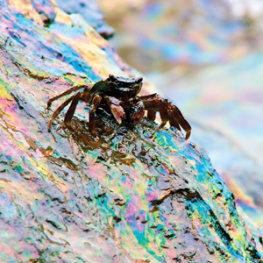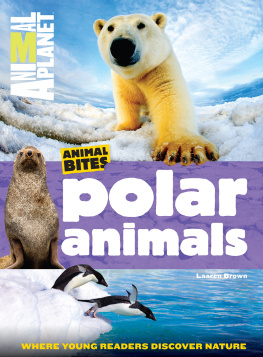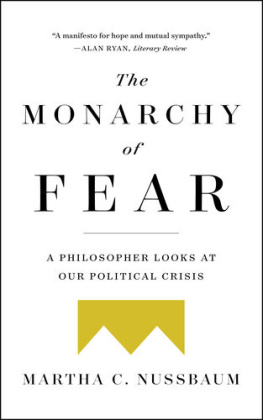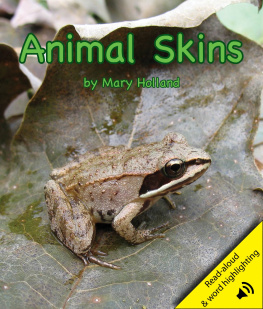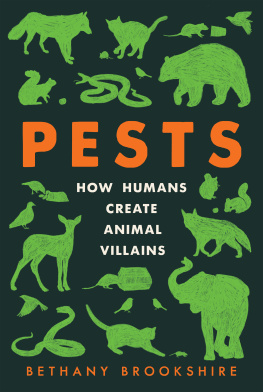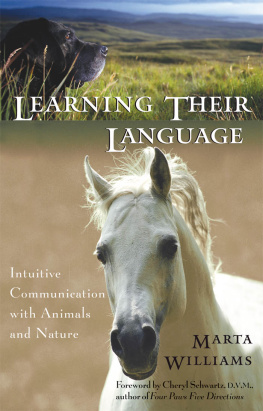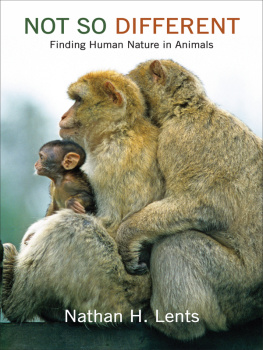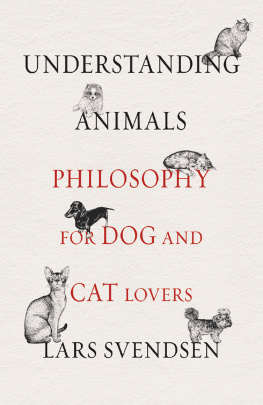Acknowledgements
Its fitting that, in a book concerned with the value of sociality, I have many people to thank. Jens Krause, often mentioned in this book, has always been, and continues to be, an inspiration to me. Quite simply, I wouldnt be where I am without him. Paul Hart showed unshakeable belief in me, as well as mocking my accent. Theres a whole cast of wonderful people who are both friends and colleagues, and who have shared adventures with me: Mike Webster, Alex Wilson, Alicia Burns, James Herbert-Read, Darren Croft, Dan Hoare, Iain Couzin, Chris Reid, Suzie Currie, Timothy Schaerf, Matt Hansen, David Sumpter, Dick James and Mia Kent, to name only a few. Its appalling to put you all in a list, but please know that Im so grateful for the times weve shared. More broadly, this book couldnt have been written without the amazing community of scientists who have devoted their lives to understanding animals, often in esoteric and unheralded ways.
Beyond the scientific side, Id like to thank those people who believed in this project and supported it when I was quavering. Jess Radburn took no credit for this, but without her, thered have been no book. Harriet Poland and Victoria Haslam were both wonderful to work with. My matchless agent, Max Edwards, deserves huge thanks for his encouragement and support, even though hes a Chelsea fan. And my amazing publisher, Ed Lake, whose guidance and insights have improved the book enormously. Im also indebted to the small army of people who have toiled away at my rough text in a vain attempt to make it sparkle, and have steered it through the production process, especially Graeme Hall.
Then theres Batboy, Callum Steven, a bona fide genius of the written word. His input to this book was nothing short of extraordinary, and the belief that he supplied when mine was failing was invaluable.
Last, but certainly not least, my family. My wife, Alison, and my sons, Sammy and Freddy, have put up with me locking myself away for endless hours to write. I guess this is the writers guilt, but never once have they chided me for it, and I hope to make it up to them. Id have loved for my mum to have been around to see this book, but it wasnt to be. My dad, however, is and if he gets the rough end of the stick in such anecdotes as the rat hunting episode, then I have to point out that the support that he, and my mum, gave me when others wondered just what the hell I was doing with my life has been both unfailing and wonderful. For this reason, Id like to dedicate this book to the two of them.
1
Brown Ale and Cannibalism
Krill and locusts form Earths greatest aggregations, though their motivations differ
The frozen south
Im in Hobart, the beautiful capital city of the Australian island state of Tasmania. In front of me in the harbour is a ship, the Aurora Australis, Australias Antarctic flagship. Its a vivid geranium orange, though patches of brown rust show through its paint its an old ship now and is starting to show it. Youd struggle to call this an attractive ship, but it is sturdy. Its proved itself as a veteran of countless trips south to the Australian bases Macquarie Island, situated about halfway between Tasmania and the South Pole, and Mawson, Casey and Davis Stations on the Antarctic mainland. The journey to and from Antarctica is not for the faint-hearted; traversing the Southern Ocean means entering some of the most inhospitable waters on Earth. A combination of climatic conditions and the absence of land for shelter can create terrifying storms. In this part of the ocean, the winds can reach 150 kilometres an hour, well in excess of what feeble landlubbers would categorise as a hurricane. At such times, theres no clear distinction between sea and sky: the furious wind drives the surface waters into a maelstrom of spray, whipping the tops off mountainous waves that fling the ship around like a toy. Blizzards strike to produce white-out conditions. Icebergs lurk to claim the unwary.
Happily for me, I can put thoughts of nautical terrors aside. Im here to visit the Australian Antarctic Division, situated safely on dry land on the outskirts of Hobart. Its an impressive complex of buildings, decorated with breathtaking images of the frozen south, a part of our planet that few are lucky enough to see first-hand. Outside the entrance theres a triptych of sculpted penguins arranged as though they were having a chat at the back end of an enormous recumbent metal seal, while in the foyer huge pictures capture the ethereal beauty of the Antarctic. Even the food in the cafeteria is themed you can get burgers that are named for polar scientists. Doubtless, the giants of ground-breaking early expeditions would be thrilled by their commemoration as a snack.
Splendid as all this is, its nothing compared to the incredible work thats going on within. My particular interest is in finger-length crustaceans called Antarctic krill I want to work out how and why they swarm. Its an important question because swarming is crucial to krill, and in turn, krill swarms are crucial to the survival of the entire Southern Ocean ecosystem. Here at the Antarctic Division lives one of the only populations of krill outside their natural habitat far to the south.
Im met at reception by So Kawaguchi and Rob King, two people whove done more than just about anyone alive to unpick the mysteries of krill. Getting the krill here to Hobart in the first place is no easy matter. They have to be collected at sea and then mollycoddled for weeks on board before the Aurora returns to port with its precious cargo. Rob, a genial yet imposing man, described his first, eventful trip to the Antarctic. Heading south, the weather progressively worsened until the Aurora was facing thirteen-metre waves and vicious winds: a succession of giddying climbs up huge ocean rollers, each followed by a stomach-clenching lurch as the ship surfed down the waves back. Each time the ship reached the trough, the bow crashed into the ocean and tonnes of icy seawater flooded the decks, then streamed from the gunwales as the ship staggered into the next climb. Making little progress into the teeth of a storm, the ship was like a boxer pinned on the ropes, taking blow after punishing blow from the waves.
Concerned at the damage that was being done, the master was forced into the decision to turn about a perilous prospect in such seas since going side-on to barn-sized waves can easily roll a ship and sink it. All aboard knew that, if the worst happened, the prospect of rescue in a storm like this was slim. Even in immersion suits, a human being would find the sea temperatures here deadly. With the entire crew holding its collective breath, the ship began to edge around. At the mercy of the Southern Ocean, it was struck by three enormous waves in succession, canting it right over to its beams. But the Aurora is made of stern stuff, and each time it heaved itself up from the canvas until finally it turned its stern to the waves. Now running with the seas rather than against them, they could ride out the storm in safety. Rob describes this experience as highly engaging.
Finally, after weeks at sea, the ship reached the relative calm of Casey Station, an Australian base on the Antarctic mainland, to be welcomed by the small contingent of highly skilled engineers, support staff and polar scientists, awaiting supplies and, perhaps just as importantly, new people to talk to.
Having arrived at Casey, Rob was itching to get to grips with the creature he has devoted his life to understanding the Antarctic krill. It was summer and, now the storm had blown itself out, the conditions were relatively pleasant, with sunshine and temperatures edging above freezing. In front of the station, the bay was for once more or less free of ice. Rob decided to take to the waters in a small inflatable boat to see what he could collect in his net. Sitting at the stern of this boat, Rob was happily dipping for specimens when he felt what he describes as a presence. Turning around, he found himself face to face with a leopard seal that had risen silently from the water and was now looking him right in the eye. Not many animals people included are tall enough to look Rob in the eye, even sitting down. But leopard seals can be three metres long and weigh half a tonne. These are fierce predators, hunters of penguins and seals; theyve even claimed at least one human life. Who knows what the leopard seal had in mind, but a moment later, it seemed to give a clue as it opened its huge jaws to give a view of its formidable dagger-like teeth, set into a skull the size of a lions. And then, as if content that the message had been received, the seal slipped back into the water and disappeared. Rob doesnt tend to take the boat out so often when hes at Casey now, but when he does, he makes sure not to sit on the side.


